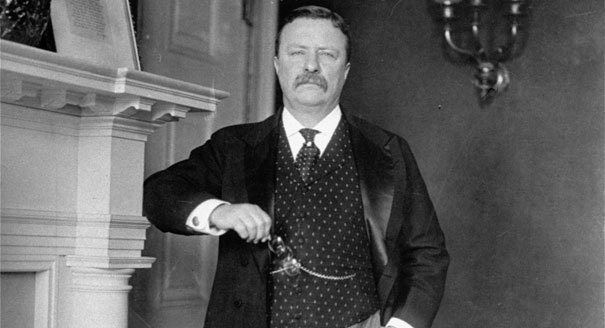Andrew Glass writes for Politico about Teddy’s first visit to Panama.
On November 9th in 1906, Theodore Roosevelt, the nation’s 26th president, became the first chief executive to travel abroad while in office. Accompanied by his wife, Edith, Roosevelt embarked for Panama from Chesapeake Bay aboard the U.S.S. Louisiana, a 16,000-ton battleship commissioned in June of that year.
The flotilla also included the newly built cruisers the U.S.S. Washington and the U.S.S. Tennessee. Before his four-day visit to the recently established Central American nation, Roosevelt stopped off in Puerto Rico. He returned to the continental United States on Nov. 26.
Roosevelt’s visit came three years after the United States extended military support to the Panamanians, who had revolted against Colombian rule. (The chief engineer of the New Panama Canal Co. organized the revolt.) At the time, Roosevelt sent the battleship U.S.S. Nashville and a detachment of U.S. Marines to support the rebels.
On Nov. 3, 1903, the locals had proclaimed the creation of the Republic of Panama. Shortly thereafter, the United States signed a protection treaty with Panama. After the revolution, U.S. engineers accelerated work on the project — a huge undertaking that would connect the Atlantic and Pacific oceans. Roosevelt visited several sites at which construction was already well under way.
The Americans had paid the Panamanians $10 million — some $275 million in current dollars — to secure the rights to build on and control the Canal Zone. Construction began in 1904 and took 10 years to complete. It cut the oceangoing trip between San Francisco and New York by some 8,000 miles. The 10-mile-wide swath across the isthmus remained under U.S. control until Dec. 31, 1999.
In anticipation of TR’s visit, both native Panamanians and U.S. citizens residing in the Canal Zone pulled out all the stops. As historian David McCullough reported in his 1977 book “The Path Between the Seas”: “Advanced preparations involved the efforts of thousands of people. … Streets were scrubbed, houses were painted or whitewashed, flags were hung from windows and balconies. Programs were printed, schoolchildren were rehearsed in patriotic airs. The Republic of Panama declared his day of arrival a national day of ‘joy and exalted enthusiasm’ and instructed the populace to behave, since ‘all thinkers, sociologists and philosophers of the universe [will] have their eyes upon us in penetrating scrutiny.’”
“The canal,” Roosevelt said later, “was by far the most important action I took in foreign affairs during the time I was president. When nobody could or would exercise efficient authority, I exercised it.”
SOURCE: WWW.HISTORY.COM
